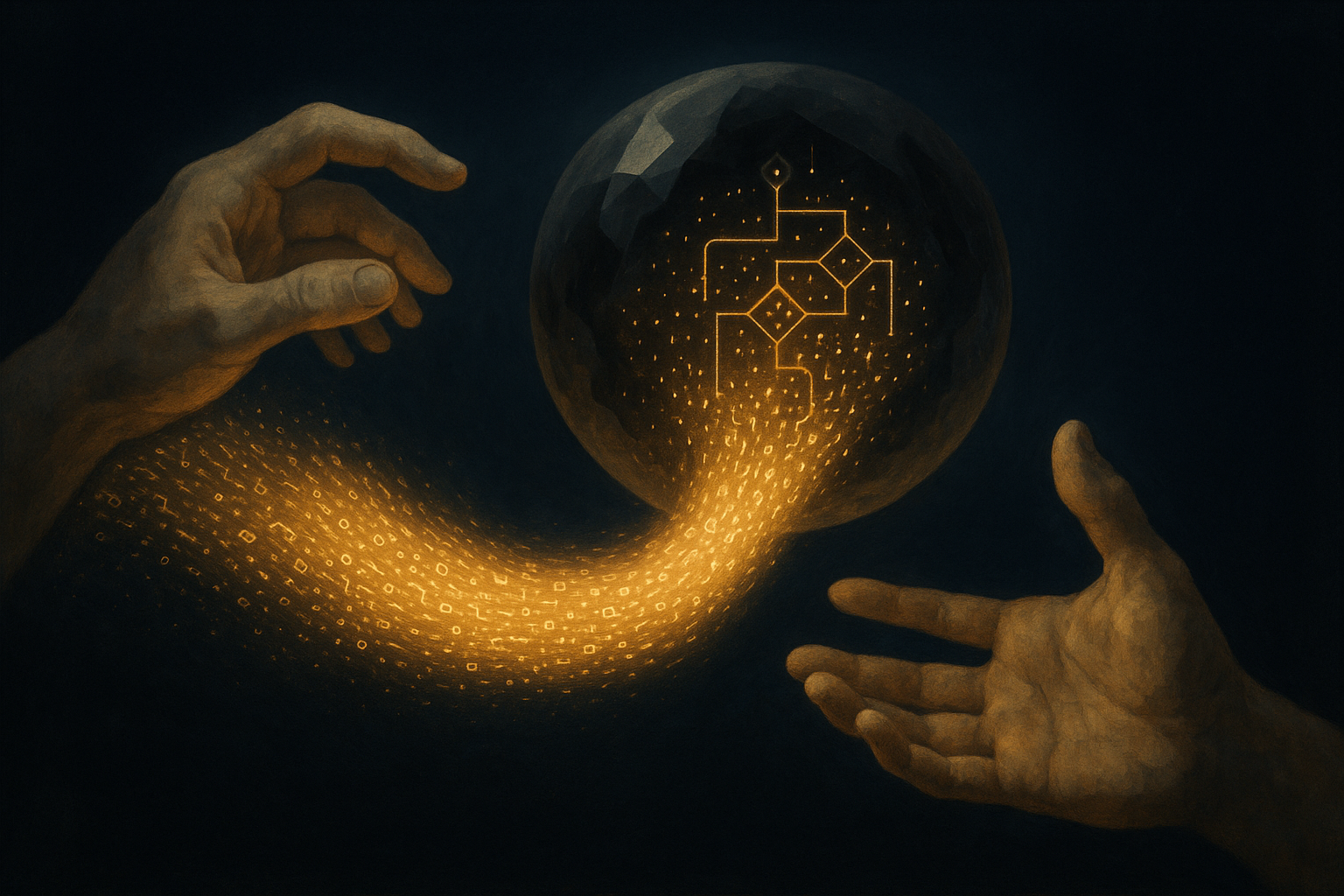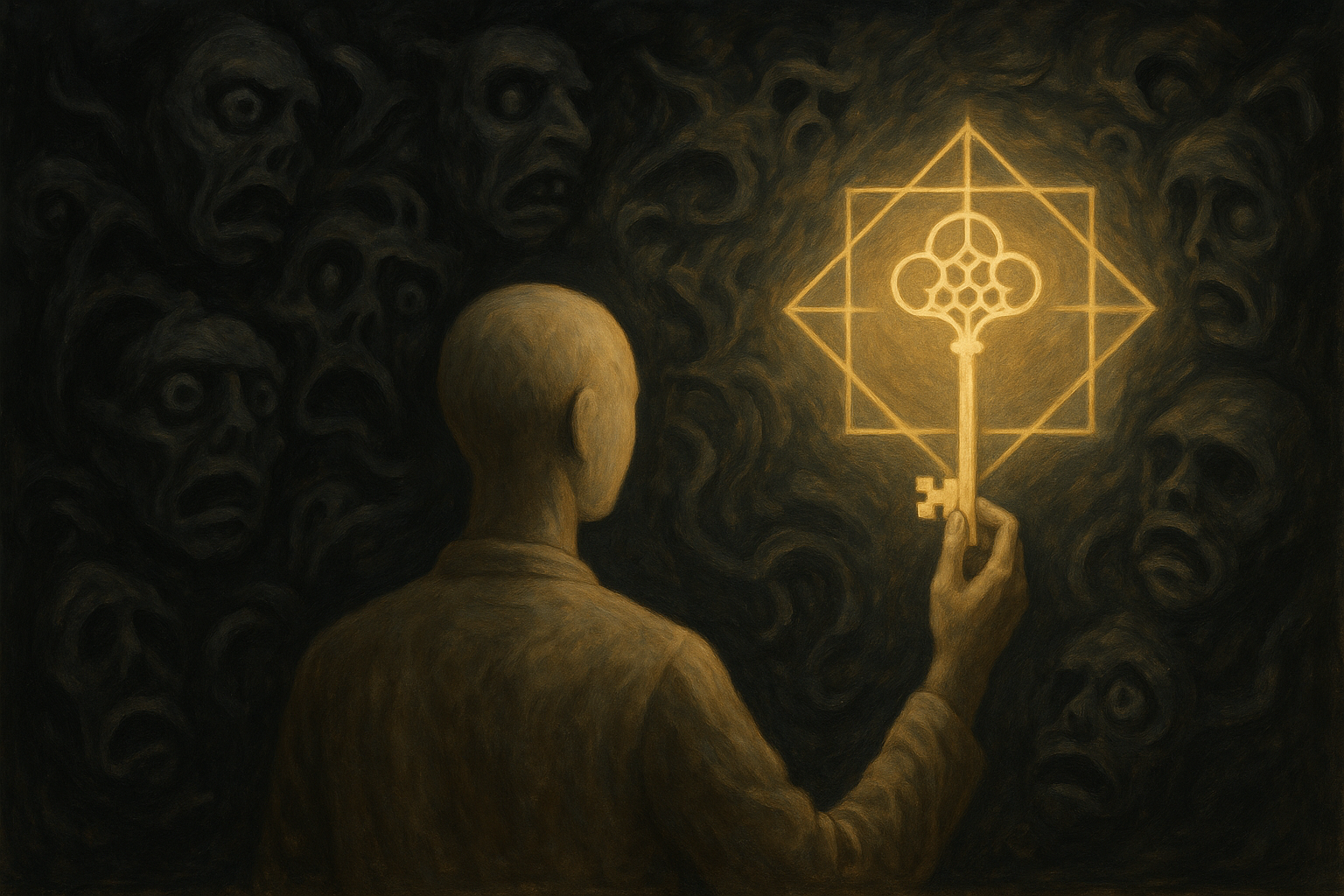AI
Basis
Artificial Intelligence Explained: Debunking Myths and Understanding the Core
Today, we're diving into the very heart of the hype. If you occasionally browse the internet, you're likely feeling constantly bombarded by terms like "neural network," "ChatGPT," "generative AI," "transformers." It seems artificial intelligence is everywhere—from your coffee maker to your news feed. It writes texts, paints pictures, diagnoses diseases, and is about to take our jobs, and then, perhaps, conquer the world.
I've spent a lot of time analyzing discussions on forums, social media, and under articles from tech publications, and I've noticed one common thing: almost everyone talks about AI, but few can clearly explain what it actually is. This information vacuum gives birth to two monsters: irrational fear and unjustified euphoria. Some see a harbinger of Skynet in every new model, while others expect it to solve all the world's problems by next Tuesday.
This gap between reality and expectations prevents us from soberly evaluating new tools, seeing their real benefits, and understanding their limitations. So, today, I invite you to clear your mind. Together, without complex jargon or abstruse formulas, we'll figure out what artificial intelligence truly is, how it differs from simple automation, and why the Terminator isn't a threat to us yet.

What is AI? The simple and clear essence
If you strip away all the marketing fluff, the definition of AI turns out to be surprisingly simple.
Artificial intelligence is a technology that allows machines to imitate human intellectual abilities, such as learning, problem-solving, and pattern recognition.
It's not about creating a "second mind" in silicon. It's "the science of making machines smart" at performing specific tasks. Imagine teaching a very capable, yet completely inexperienced, assistant. You don't explain the philosophy of existence to them; instead, you show them thousands of examples: "this is spam," "this is an important email," "this is what a cat looks like," "and this is what a dog looks like."
Over time, your assistant, by analyzing these gigabytes of examples, starts to find patterns themselves. They notice that certain words or links frequently appear in spam emails, and cats in photos have characteristic ears and whiskers. Based on these patterns, they learn to make decisions about new, unfamiliar data. That's where the magic lies.
Key characteristics of true AI:
- Ability to learn. Unlike a conventional program that strictly follows pre-programmed instructions, an AI system can improve its performance by receiving new data. It doesn't just execute; it learns.
- Pattern recognition. This is the heart of AI. Whether it's patterns in an image, trends in financial transactions, or patterns in human speech—AI looks for connections where a human might not see them.
- Adaptability. AI can adjust its behavior based on new information without needing a complete reprogramming. If a new type of fraud emerges in the world, a security system trained on fresh data can adapt and begin to block it.
It's important to understand that "Artificial Intelligence" is an umbrella term, like "sport." It encompasses many disciplines: machine learning (ML), natural language processing (NLP), computer vision, and so on. What we deal with today is called "Narrow AI"—systems specialized for one specific task (playing chess, recognizing speech, recommending movies). The hypothetical "Artificial General Intelligence (AGI)", capable of thinking and learning any task at a human level, is still pure science fiction.

What AI definitely IS NOT: Debunking the main myths
Now for the most interesting part. Judging by online discussions, a whole pantheon of myths has grown around AI. Let's break down the most popular ones.
Myth #1: AI has consciousness, emotions, and intentions
This is perhaps the most common and dangerous myth, fueled by decades of science fiction. We are shown robots that experience love, fear, or a thirst for power. In reality, modern neural networks are complex mathematical models, nothing more.
They brilliantly simulate meaningfulness. ChatGPT can write a poignant poem about lost love, but it doesn't feel sadness. It simply statistically selects words that were most often associated with the theme of "lost love" in its training dataset. It's a very advanced, very complex autoresponder, but not a personality.
AI does not have:
- Consciousness: it is not aware of itself or its existence.
- Intentions: it does not "want" to help or harm you. It performs a mathematical function to optimize the result.
- Subjective experience: it does not know what it's like to see the color red or taste a strawberry.
When AI says "I think" or "I believe," it's merely a linguistic construct it has learned to use by analyzing texts written by humans. It's an imitation, not a real thought process.
Myth #2: AI is infallible and always accurate
This myth is often encountered by those who are just starting to use AI tools. It seems that since a machine is so smart, it cannot make mistakes. Alas, it absolutely can.
AI models are prone to what are called "hallucinations"—they can generate false information with absolute confidence, inventing facts, quotes, and sources. The name of our blog is precisely about this—an attempt to bring these hallucinations under control. Why does this happen? Because AI is a pattern-finding machine, not a truth-finding one. If a certain combination of words frequently appeared together in its data, it might present it as a fact, even if it's complete nonsense.
The quality of AI's work directly depends on the quality of the data it was trained on. The "garbage in, garbage out" principle works here more than ever. If the data contained biases or errors, the AI will gladly absorb and propagate them.
Myth #3: Artificial General Intelligence (AGI) is just around the corner
Many companies and media outlets actively promote the idea that we are on the verge of creating a superintelligence. This is excellent marketing, but, according to most serious researchers, true AGI is still light-years away.
As we've already said, all existing AIs are highly specialized. A model that beats the world champion in Go cannot order you a pizza or sympathize if you're having a bad day. It can only do one thing, but it does it phenomenally well.
Creating a universal intelligence capable of abstract thinking, transferring knowledge between completely different domains, and common sense is a task of colossal complexity, and we don't even have a theoretical understanding of how to approach it yet. So, it's too early to panic or, conversely, to hope for the imminent arrival of a digital god.
Myth #4: AI learns and develops completely independently
This myth creates the image of a self-developing organism that will one day get out of control. The reality is far more prosaic. Behind every "self-learning" system lies the enormous work of thousands of people.
- Data: Someone has to collect, clean, and label gigantic datasets for training.
- Architecture: Engineers design the very structure of the neural network.
- Training and tuning: The training process requires colossal computational power and constant human oversight to select parameters and evaluate results.
AI does not learn in a vacuum. It learns from the "textbook" provided by humans. It can find unexpected patterns in this textbook, but it cannot go beyond its boundaries.

Key Distinction: AI vs. Automation
To solidify our understanding, let's examine another important point where confusion often arises. What's the difference between AI and good old automation?
Imagine a coffee machine.
Automation is a simple drip coffee maker. It has one button. You press it, and it performs a rigidly programmed sequence of actions: heat water to 95°C, pour it through the filter, turn off. It will do this the same way today, tomorrow, and a year from now. It doesn't learn or adapt. It's a system based on clear "if... then..." rules.
Artificial Intelligence is a smart, next-generation espresso machine. It's connected to your profile. It knows that on Mondays you prefer a double espresso, and on weekends, a cappuccino with cinnamon. It analyzes your ratings of different coffee varieties and can recommend a new one that you're highly likely to enjoy. If you start drinking decaf coffee, it will notice this pattern shift and adapt its suggestions.
- Automation follows rules.
- AI finds patterns and makes predictions.
Of course, in modern systems, they often work together. For example, your email uses automation to sort messages into folders based on rules you've set, and simultaneously uses AI to analyze email content and identify new, previously unknown types of spam.

AI in real life: where we already encounter it
The funny thing is, we've been living surrounded by narrow AI for many years, we just didn't call it that loudly. Here are a few examples that show its true, applied nature:
- Recommendation feeds (Netflix, YouTube, Spotify): AI analyzes what you watch or listen to, compares your tastes with millions of other users, and predicts what else you might like.
- Spam filters in email: A classic example of AI that learns from millions of emails to distinguish spam from legitimate correspondence.
- Navigation apps (Google Maps, Yandex.Maps): AI analyzes real-time traffic data, historical data, and reports from other drivers to predict traffic jams and build the optimal route.
- Face recognition in photos: When your smartphone suggests tagging a friend in a photo, that's computer vision at work—one of the areas of AI.
- Bank fraud monitoring: Systems analyze your transactions, and if you suddenly make a purchase atypical for you (e.g., at 3 AM in another country), the AI flags it as suspicious.
What unites all these examples? They are highly specialized, useful, and completely lack consciousness. They are simply very effective tools for solving specific tasks.
Why is it so important to understand the difference?
You might ask, "Okay, we get it. But what difference does it make what we call it?" The difference is huge, and it impacts both our personal decisions and society as a whole.
- On a personal level: Misunderstanding breeds fear, which prevents us from using useful tools. Or, conversely, inflated expectations lead to disappointment. Understanding that ChatGPT is not an omniscient oracle, but a language assistant prone to errors, will help you use it correctly: for generating ideas, drafts, paraphrasing, but always with mandatory fact-checking.
- On a societal level: Panic around "the rise of the machines" distracts from real and pressing problems associated with AI: algorithmic bias, data privacy, and impact on the labor market. Instead of discussing "Terminator" scenarios, we should focus on developing laws and ethical norms for the technologies we already possess.

Conclusion: Building a Foundation for the Future
So, let's summarize. Artificial intelligence, in its current form, is not a thinking being, but a powerful tool for pattern recognition and learning from data. It does not possess consciousness, is not infallible, and is still very far from Hollywood depictions.
It is a technology that complements human intelligence, rather than replacing it. It takes on routine cognitive tasks, allowing us to focus on creativity, critical thinking, and strategic decisions.
Now, when you hear another big headline about AI, I urge you to approach it with a healthy dose of skepticism and ask the right questions:
- What specific technology is being discussed?
- What problem does it solve?
- What data was it trained on?
- What are its real limitations?
Try a small experiment. Over the next week, pay attention to the digital services you use. Ask yourself, "Is there AI here?" If the service recommends something to you, personalizes, predicts, or understands your speech—most likely, the answer is "yes."
This is just the first step on the path to AI literacy. In future articles, we'll delve deeper and discuss specific types of neural networks, their impact on various professions, and the ethical dilemmas they present to us.
Stay curious.

